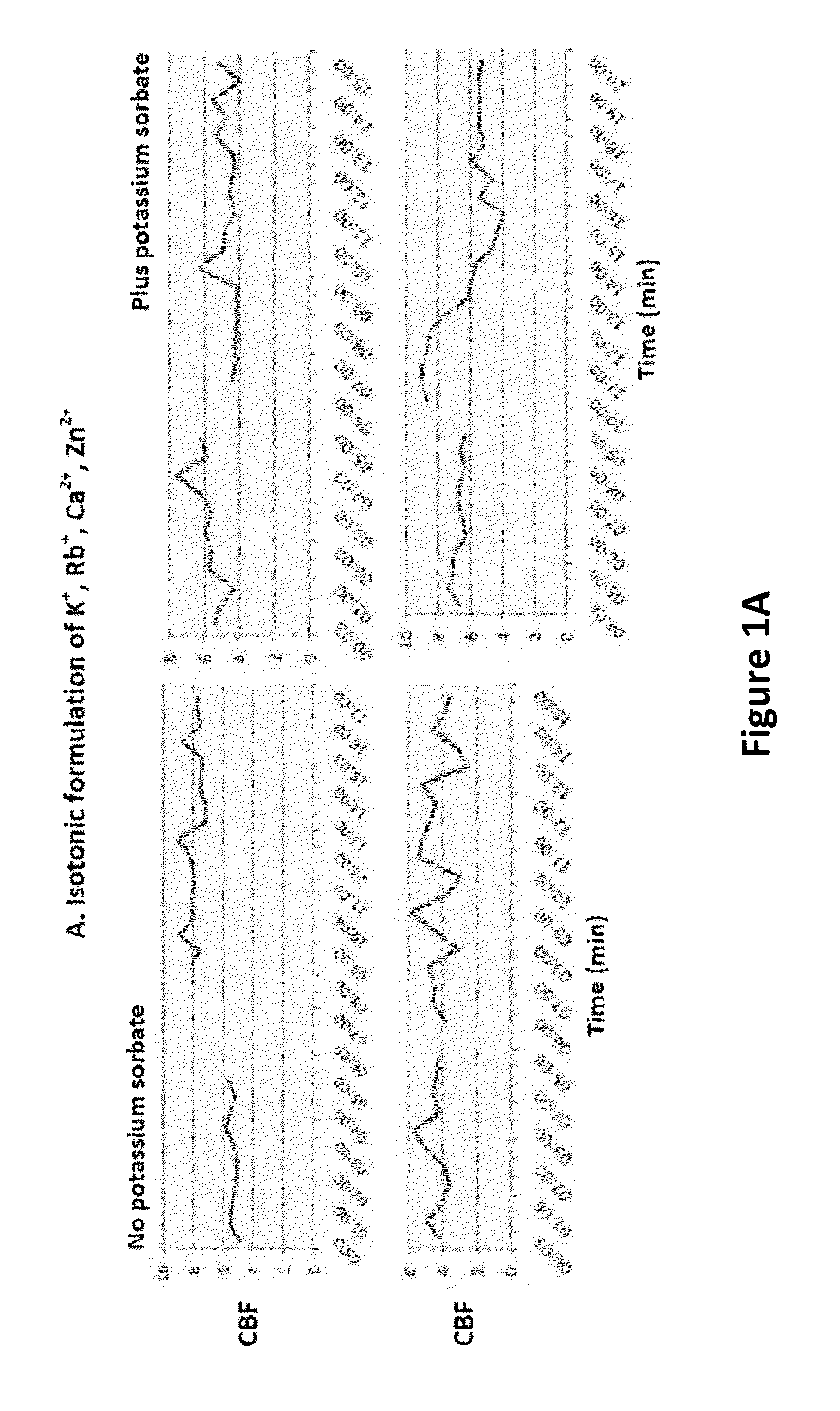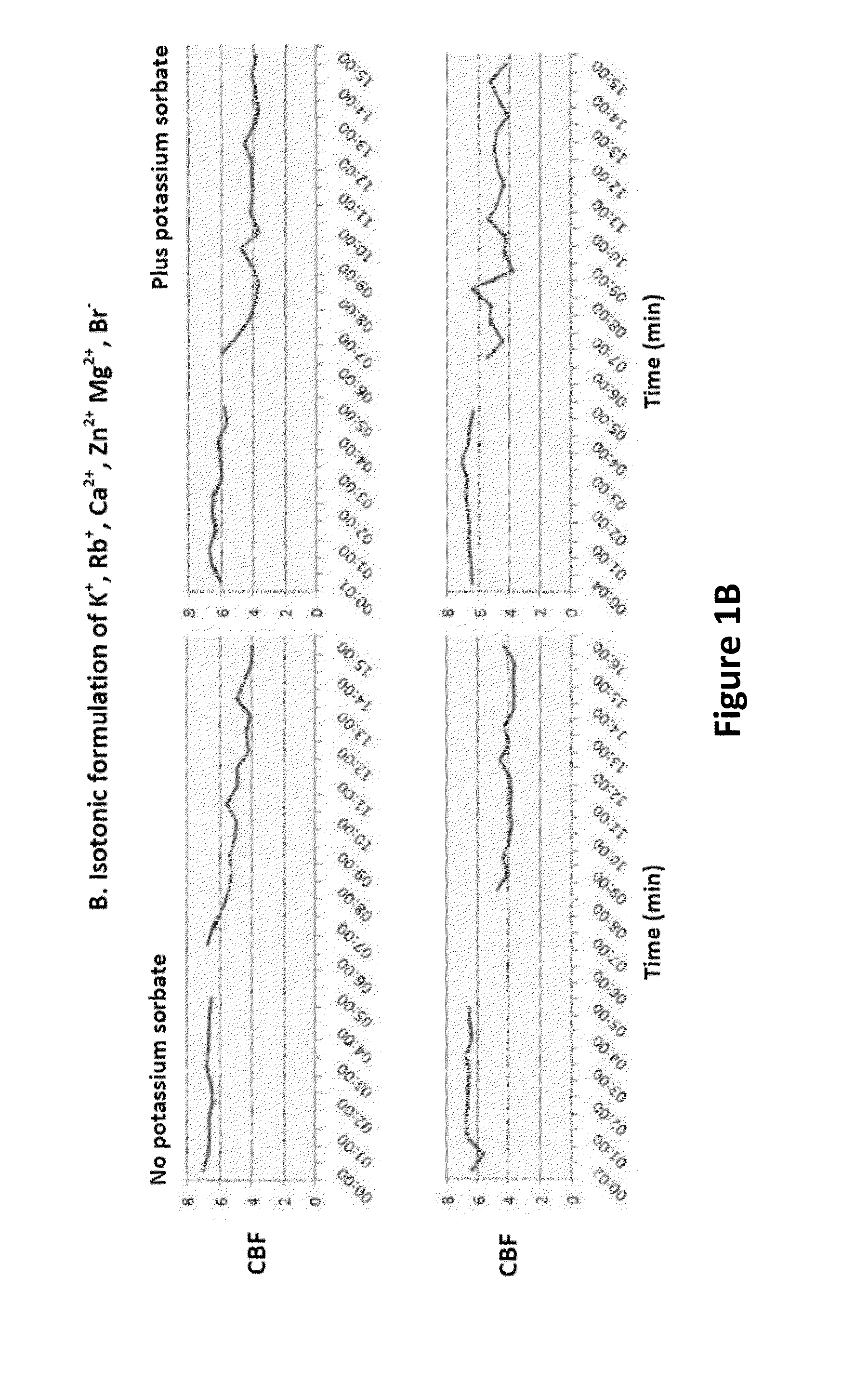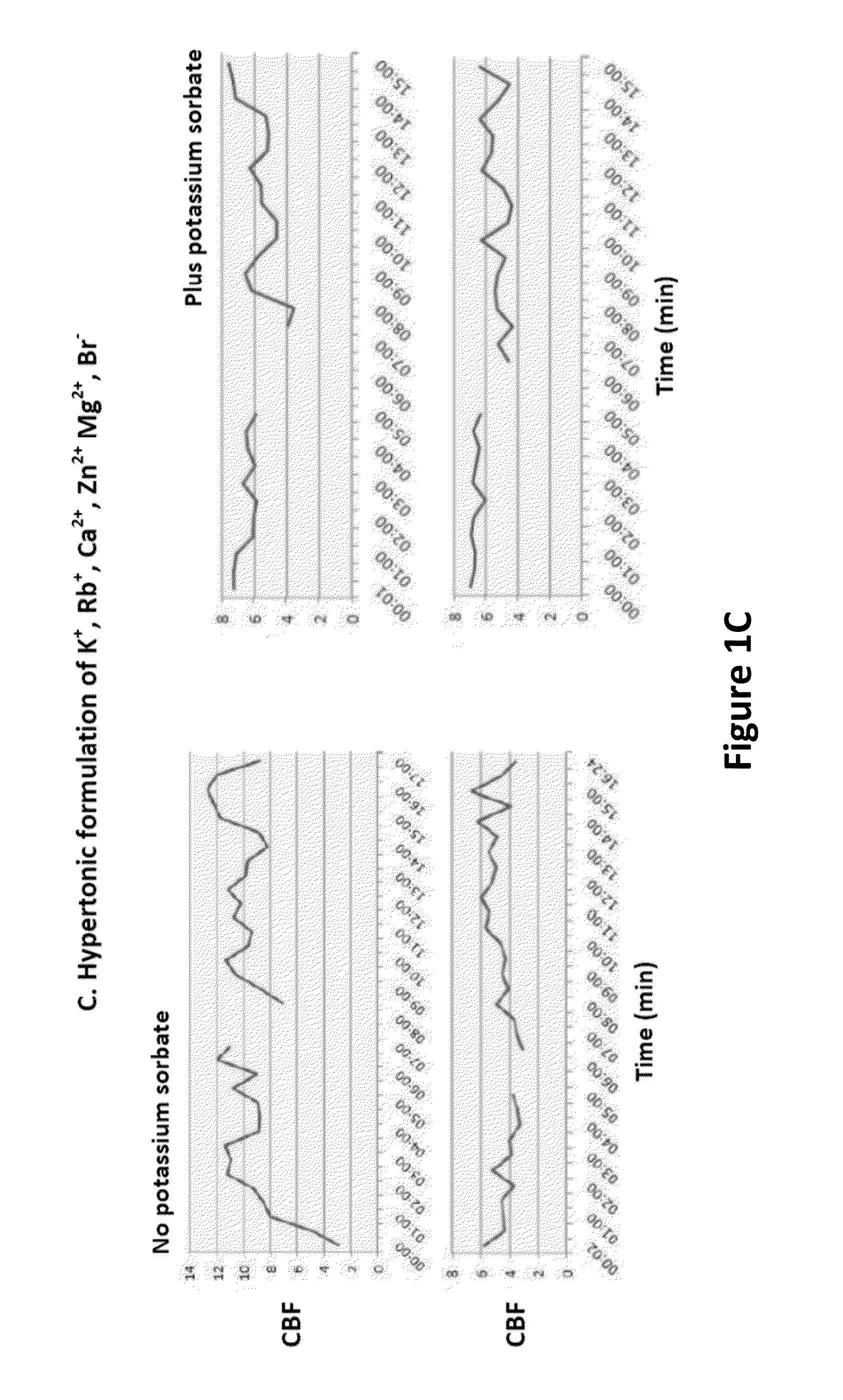Methods of enhancing wound healing using magnesium and bromide
a technology of magnesium and bromide, applied in the field of enhancing wound healing, can solve the problems of pathophysiologic endpoint, unfavorable survival of microorganisms, impaired mucociliary clearance, etc., and achieve the effect of enhancing the healing of damaged mucosal tissu
- Summary
- Abstract
- Description
- Claims
- Application Information
AI Technical Summary
Benefits of technology
Problems solved by technology
Method used
Image
Examples
example 1
Efficacy for the Treatment of Sinonasal Injury
[0160]To evaluate efficacy, a live rabbit model of maxillary sinus injury was used to test the ability of the present invention to cause re-epithelialization of the rabbit maxillary sinus mucosa after surgical trauma.
[0161]Pasteurella-free New Zealand white rabbits underwent maxillary sinus surgery. In the first experiment, surgery was performed to completely remove the left maxillary sinus mucosa while only the mucosa of the medial wall was removed on the right side. After mucosal stripping, the periosteal flaps were repositioned and the skin incision was closed with sutures. Rabbits were sacrificed at 2, 7, 15, and 22 days post surgery and the snouts sectioned and processed for hematoxylin and eosin staining for analysis of mucosal regeneration. A qualitative grading of the epithelia was performed. Twelve symmetrically distributed points of each maxillary sinus were evaluated by light microscopy. The epithelium found was classified as ...
example 2
Enhancement of Post-Surgical Sinonasal Recilialization
[0171]In addition to decreasing osteoneogenesis, daily irrigation with metal ion solutions also increase the rate of recilialization of the medial wall in sinonasal passages in the rabbit compared to daily saline irrigation.
[0172]In a follow-up experiment, nine New Zealand White rabbits underwent bilateral medial wall maxillary mucosal stripping followed by placement of maxillary sinus indwelling irrigating catheters. In this way, each nostril in each rabbit could be irrigated with different solutions for 14 days.
[0173]Both the sides of the nose, and the therapy were randomized in the rabbits as follows:
[0174]one side of the nose in each rabbit was irrigated once daily (3 cc) with normal saline solution to act as a control for the other side. In five of the rabbits the other side of the nose was irrigated once daily (3 cc) with metal ion Solution 2 (sterile isotonic formulation of K+, Rb+, Ca2+, Zn2+ without preservative) and in ...
example 3
[0178]Based upon the results of Example 2, another study using 24 rabbits was performed in which Solution 3 was compared to Normal Saline, the normal standard of care for nasal irrigation treatment after Functional Endoscopic Sinus Surgery (FESS) in patients with chronic rhinosinusitis. Twenty four New Zealand White rabbits underwent bilateral medial wall maxillary mucosal stripping followed by placement of an indwelling irrigation catheter as described above. In a randomized fashion, one nasal passage received 3 cc of normal saline daily, while the contralateral nasal passage received 3 cc of Solution 3 daily. After a 14 day therapeutic trial, snouts were harvested and remucosalization was assessed by hematoxylin and eosin staining and immunohistochemical staining using type IV-tubulin, a marker of motile cilia. Reciliation grading was as described above using two blinded observers. FIG. 11 shows both H&E and immunohistochemical staining of sections of the medial maxillary sinus wa...
PUM
 Login to View More
Login to View More Abstract
Description
Claims
Application Information
 Login to View More
Login to View More - R&D
- Intellectual Property
- Life Sciences
- Materials
- Tech Scout
- Unparalleled Data Quality
- Higher Quality Content
- 60% Fewer Hallucinations
Browse by: Latest US Patents, China's latest patents, Technical Efficacy Thesaurus, Application Domain, Technology Topic, Popular Technical Reports.
© 2025 PatSnap. All rights reserved.Legal|Privacy policy|Modern Slavery Act Transparency Statement|Sitemap|About US| Contact US: help@patsnap.com



